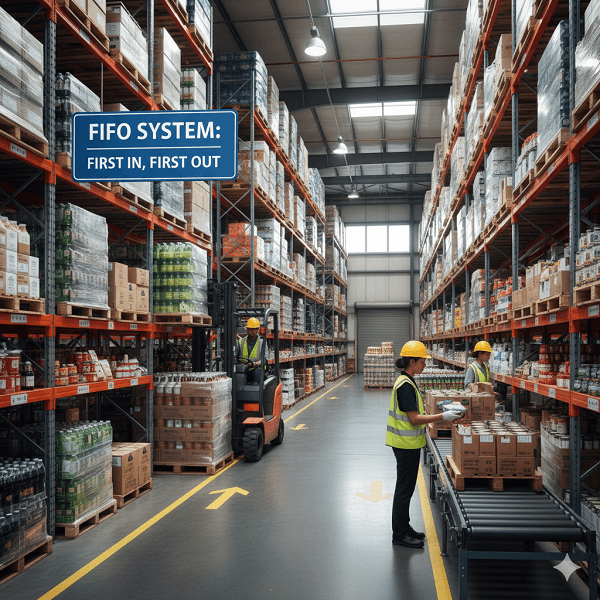Efficient inventory management is critical in the food and beverage industry, where expiration dates and product freshness directly affect profitability and customer satisfaction. Implementing FIFO in warehouse for food and beverage operations ensures that goods are used in the correct sequence, reducing waste and maintaining product quality.

The FIFO in warehouse for food and beverage system, which stands for First-In, First-Out, ensures that older stock moves out before newer items. This principle is especially vital for perishable items such as dairy, frozen foods, beverages, and fresh produce. Without FIFO, businesses risk storing products past their expiration dates, resulting in spoilage, increased costs, and potential compliance issues.
One of the biggest challenges in the food industry is perishable goods inventory control. Products like meats, dairy, and juices often have short shelf lives, making FIFO a necessity. By rotating stock effectively and labeling items with clear expiration dates, warehouses can maintain accurate stock flow. This method not only prevents food spoilage but also improves customer trust through consistent quality.
For warehouses utilizing refrigeration or freezer facilities, the cold storage FIFO method is crucial. Frozen foods, ice creams, and chilled beverages must be carefully tracked to ensure no product lingers past safe consumption dates. FIFO in cold storage setups involves:
By following these steps, warehouses maintain compliance with food safety regulations and extend shelf life efficiency.
Adopting FIFO in warehouse for food and beverage is one of the most effective strategies for reducing food waste through FIFO management. Food and beverage companies often face losses due to expired goods, and improper organization worsens the issue. FIFO ensures stock moves fluidly, reducing the risks of outdated inventory. This not only conserves resources but also aligns with sustainable business practices, lowering the ecological footprint of food waste.

Extending beyond storage, FIFO logistics in food and beverage supply chain plays a key role in ensuring freshness from warehouse to delivery. Proper FIFO execution prevents outdated goods from reaching retailers or consumers, protecting brand reputation. Best-practice logistics include:
From production to distribution, FIFO ensures efficiency, reduces storage costs, and strengthens overall supply chain reliability.
The FIFO in warehouse for food and beverage system is more than a storage method—it is a foundational principle for food safety, compliance, and sustainability. Through perishable goods inventory control, cold storage FIFO methods, and FIFO logistics in food and beverage supply chain, businesses can achieve significant cost savings while ensuring quality and freshness. By reducing waste and maximizing operational efficiency, FIFO directly supports both profitability and environmental responsibility.